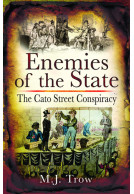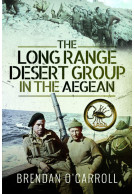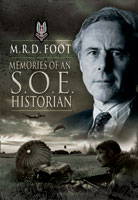The Charge of the Heavy Brigade (Hardback)
Scarlett’s 300 in the Crimea
Imprint: Pen & Sword Military
Pages: 256
Illustrations: 25 colour
ISBN: 9781399093002
Published: 20th October 2021
(click here for international delivery rates)
Order within the next 10 hours, 29 minutes to get your order processed the next working day!
Need a currency converter? Check XE.com for live rates
| Other formats available - Buy the Hardback and get the eBook for £1.99! | Price |
|---|---|
| The Charge of the Heavy Brigade ePub (12.9 MB) Add to Basket | £6.99 |
‘Glory to each and to all, and the charge that they made! Glory to all three hundred, and all the Brigade!’
Everyone has heard of the charge of the Light Brigade, a suicidal cavalry attack caused by confused orders which somehow sums up the Crimean War (1854-6). Far less well known is what happened an hour earlier, when General Scarlett’s Heavy Brigade charged a Russian army at least three times its size. That ‘fight of heroes’, to use the phrase of William Russell, the world’s first war correspondent, was a brilliant success, whereas the Light Brigade’s action resulted in huge casualties and achieved nothing.
This is the first book by a military historian to study the men of the Heavy Brigade, from James Scarlett, who led it, to the enlisted men who had joined for the ‘queen’s shilling’ and a new life away from the hard grind of Victorian poverty. It charts the perils of travelling by sea, in cramped conditions with horses panicking in rough seas. It tells the story, through the men who were there, of the charge itself, where it was every man for himself and survival was down to the random luck of shot and shell.
It looks, too, at the women of the Crimea, the wives who accompanied their menfolk. Best known were Florence Nightingale, the ‘lady with the lamp’ and Mary Seacole, the Creole woman who was ‘doctress and mother’ to the men. But there were others, like Fanny Duberly who wrote a graphic journal and Mrs Rogers, who dutifully cooked and cleaned for the men of her husband’s regiment, the 4th Dragoon Guards.
This book covers much the same ground as Cecil Woodham-Smith’s The Reason Why (Constable, 1957), in describing the recruitment, training and ethos of pre-Crimean War British cavalry regiments, but with the emphasis upon the Heavy Brigade and its experience at Balaclava and afterwards, rather than those of the Light Brigade. The author believes that Ms Woodham-Smith was mistaken in regarding the hostility between Lords Lucan and Cardigan as a significant cause of the disaster that befell the latter. Unlike Martin Sheppard, author of the more recently published General Sir James Scarlett (Pen & Sword, 2022), he regards Lucan’s order to halt the Heavy Brigade’s advance to support the Light Brigade as the one correct decision that officer made that day.
Arthur Harman, Miniature Wargames
The Prologue to the main narrative, entitled ‘The Lost Brigade’, describes how the Heavy Brigade was omitted from films made in 1912, 1928, 1936 and 1968, and reproduces the text of Alfred, Lord Tennyson’s little-known poem The Charge of the Heavy Brigade which he was persuaded to write by a friend in 1882.
Four full page maps are placed at the start of the book: The Seat of War 1854-6; War Zone, South West Crimea, showing the coast from Kalamita Bay to Balaclava and the main rivers, but with no other detail of the terrain; Battle of Balaclava, second phase, the Charge of the Heavy Brigade, with minimal detail of the terrain, and Battle of Balaclava, third phase, the Charge of the Light Brigade. In both battle maps, British, French and Russian troops are shown as white boxes, identified only by text beside them. Individual British regiments are identified in the first battle map but not the second.
Eight pages of colour plates are bound into the centre of the book. They include modern photographs of the North Valley from the Sapoune Heights; a soldier’s pipe found in the British Lines; an 1834 pattern British cavalry sword; and the uniform trunk and grave of Captain George Brigstocke, 4th Dragoon Guards. There is a monochrome engraving of General James Scarlett in the uniform he wore at Balaclava; a contemporary Punch cartoon about the enquiry into the state of the army; and a still from Tony Richardson’s 1968 film, The Charge of the Light Brigade, showing the Heavy Brigade engaging the Russian cavalry, a sequence which was cut by the director before the film’s release.
The author has produced ten full length colour portraits of six officers and four men of the Heavy Brigade, some of which show them as they would have appeared in the Charge, others showing full, mess and stable dress, with their faces based on contemporary photographs. In most cases the heads are rather too large for the bodies, but the uniforms are shown quite clearly and would be a useful reference for painters of model soldiers.
An appendix lists the officers and men of the Heavy Brigade, by rank and regiment, with their ranks at the time of the charge. The names of those wounded are underlined; those killed are given in italics and underlined.
A two page bibliography and a six page index conclude the book; there are no footnotes.
A very readable account of the Heavy Brigade in the Crimean War, offering a
valuable alternative perspective on the Battle of Balaclava.
So well done, M J Trow, for focusing on the Heavy Brigade which, an hour before the Light Brigade's suicidal charge, had succesfully taken on a Russian enemy three times its size. This will be a useful reference work.
Paul Nixon
Read the full review here
As featured in
History of War
This volume will appeal to a wide audience from medal collectors, modellers, academics and military historians. A huge amount of effort must have gone into researching and writing this exceptional tome. It has lots of details about the Charge and its participants which will make it interesting to read by both the general historian and the specialist in this field. It is highly enjoyable to read, and it comes highly commended.
Dr Stuart C Blank, Military Archive Research
This book will be enjoyed by anyone with an interest in the Crimean War. It brings a new perspective to the performance of the British
Phil Curme
Cavalry Division at Balaklava and provides an authorative overview of the entire campaign. It also surfaces a wide range of first-hand accounts which provide'colour' and insight. Recommended.
Read the full review here
Rating: 5 out of 5 stars
NetGalley, Arthur Morrill
Not only does the author provide great operational detail of the battle, which is usually covered with a focus on the Light Brigade, but he expands the aperture of information and understanding to brilliantly inform the reader of operations by focusing on the Heavy Brigade as a contrast. The Heavy Brigade was intended as the primary British shock force, leading frontal charges to break enemy lines. Unlike the Lord Cardigan and his Light Brigade, Major General Scarlett and the Heavy Brigade successfully attacked its assigned objective.
The author’s well-researched focus on defense policy, organizational matters of the time, the British purchase (of officer commissions) system, the Red Cross and like efforts, and his exceptional coverage of things logistics and sustainment, and what we now call the Common Table of Allowances (TOA), makes this well-researched book the cardinal effort that it is. M. J. Trow’s “The Charge of the Heavy Brigade: Scarlett’s 300 in the Crimea” (ISBN 9781399093002) is a must read. Five stars.
A fascinating book about a little-known British cavalry unit, the Heavy Brigade, during the Crimean War. They fought alongside the ill-fated Light Brigade, fighting the Russian army.
NetGalley, Peter Coxall
Apart from mainly incompetent leadership, the brigade had to endure dreadful diseases, virtually no training, lack of food, no Winter clothing, poor communications, and primitive/non-existent housing. Their horses suffered as badly as their human masters. through lack of fodder and frightful living conditions.
I really enjoyed reading the tales from the various participants, particularly the women who stood back as spectators to the battles as though they were sporting events. Indeed, the political machinations between Russia and Britain are often referred to as the 'Great Game'!... I can recommend this book to those who enjoy military history or who are merely curious about the Crimean War.
The book concentrates on the lesser known action that took place prior to the charge - the heavy brigade. Explained in great detail, the author explains both the make-up of the unit an interesting-dealing. A good history read.
NetGalley, Ron Baumer
This is a really good narrative history of the events surrounding the service of the Heavy Cavalry Brigade in the Crimea. Of necessity it includes many aspects of the Light Brigade and Infantry actions and paints a vivid picture of the internal posturing and squabbling among the senior command that had a consequential impact on events. The author is very clear where he lays blame.
Michael McCarthy
Michael McCarthy. Battlefield Guide
About M J Trow
M.J. Trow is the author of nearly 100 books covering crime fiction, true crime and historical biography. He is a military historian by training, lectures extensively in the UK and overseas, and has appeared regularly on the History and Discovery Channels. He can be heard in podcasts on all the usual platforms, both as a guest and the main presenter on both historical and true crime subjects. He lives in the Isle of Wight.




















